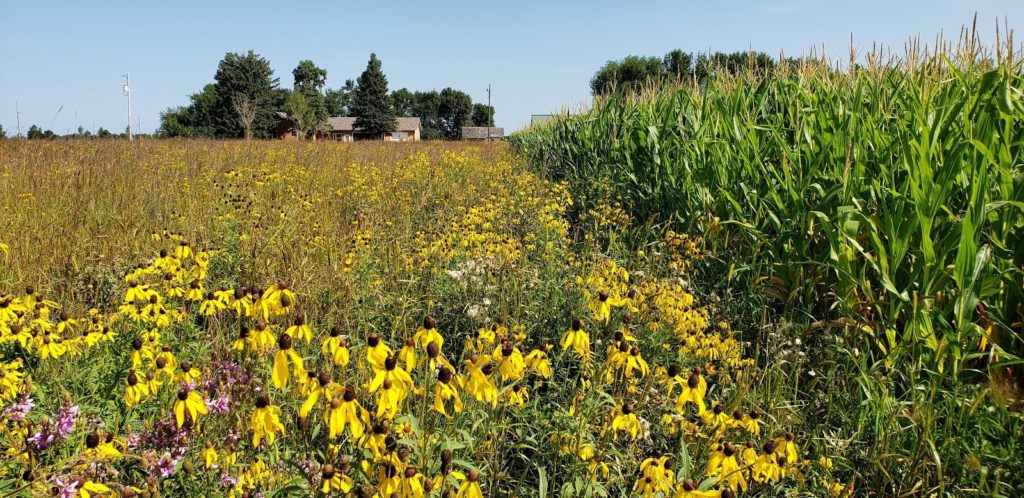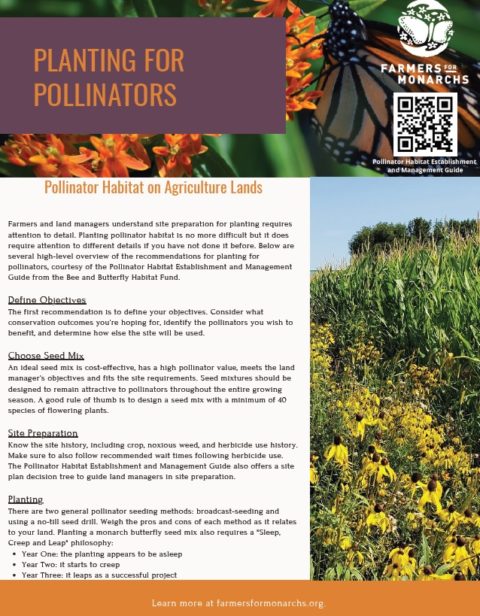POLLINATOR HABITAT ON AGRICULTURE LANDS
Farmers and land managers understand site preparation for planting requires attention to detail. Planting pollinator habitat is no more difficult but it does require attention to different details if you have not done it before. Below are several high-level overview recommendations for planting for pollinators, courtesy of the Pollinator Habitat Establishment and Management Guide from the Bee and Butterfly Habitat Fund.
Define Objectives
The first recommendation is to define your objectives. Consider what conservation outcomes you're hoping for, identify the pollinators you wish to benefit, and determine how else the site will be used.
Choose Seed Mix
An ideal seed mix is cost-effective, has a high pollinator value, meets the land manager's objectives, and fits the site requirements. Seed mixtures should be designed to remain attractive to pollinators throughout the entire growing season. A good rule of thumb is to design a seed mix with a minimum of 40 species of flowering plants.
Site Preparation
Know the site history, including crop, noxious weed, and herbicide use history. Make sure to also follow recommended wait times following herbicide use. The Pollinator Habitat Establishment and Management Guide also offers a site plan decision tree to guide land managers in site preparation.


